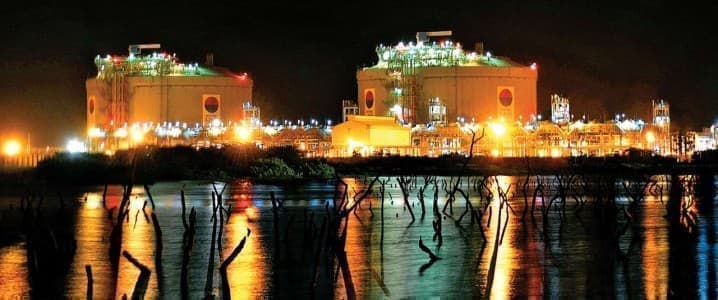Record-high coal and liquefied natural gas (LNG) prices in Asia are threatening to slow down the fastest-growing economies in the region. The global energy crunch, which has energy-importing countries scrambling to secure supply even at record prices, could be a major speedbump on the road to the much-touted energy transition.
Asia is the poster child of reliance on coal - the dirtiest fossil fuel still accounts for large shares of power generation and is the driver of industrial economic growth, including in the world’s second-largest economy and top oil - and now LNG - importer, China.
The current immediate government policy in China, as well as in India, is to secure energy supply for the winter “at all costs” to avoid or prevent power outages that would cripple economic growth and put further strain on global supply chains. Coal prices surged to a record-high last week. So did LNG prices in Asia, beating the previous record set last winter.
Longer-term, economies in Asia are at a crossroads, Reuters columnist Clyde Russell points out. They could continue to rely on large amounts of coal and gas as the basis for their power generation and industries and prepare for more supply and price shocks in the future.
Or they could accelerate the deployment of renewable energy sources to replace coal-fired generation and back intermittent renewables with battery storage and gas-powered peaking plants.
Some Asian countries, including China, Japan, and South Korea, have set carbon neutrality targets for 2050 or, in China’s case, for 2060. India doesn’t have any such target and continues to rely very much on coal, which makes up 70 percent of its electricity generation, although renewables are surging in both China and India.
The problem with renewables is that even at the fast pace of adoption, they would still fall short of the rising power demand in Asia, where industrialization and urbanization are in full swing, unlike in developed economies where these processes are mostly over.
The other, more technical, problem with renewables is that they will need backup with gas and huge battery storage capacity to ensure the reliability of grids. That’s a lot of required investment for greener economies in Asia.
The choices that individual Asian economies make for their energy supply in the long term will shape the demand trends of coal and gas for the next few decades.
Coal demand is in terminal decline, all analysts and forecasters say. Yet, it will be developing Asia that will prop up coal’s last hoorah this decade, the International Energy Agency (IEA) said last December when it predicted 2.6-percent growth in global demand in 2021 led by China, India, and Southeast Asia.
Due to the record natural gas prices in Europe and Asia, coal demand is growing currently more than previously expected. As per IEA estimates, coal demand globally is set to flatten out by 2025.
Yet, Asia could extend the life of relatively new coal-fired plants, which would support demand, according to Wood Mackenzie.
China has recently pledged to end overseas coal investment, which could hit coal demand in the rest of Asia this decade.
“[T]he key is no longer about the number of new coal projects that will be financed, but whether and when countries can afford to retire their existing fleets. Due to the relatively young coal plant ages in developing Asia and the lack of new coal financing, countries may be forced to extend the life of their existing coal fleets to accommodate a less disruptive transition,” Wood Mackenzie principal analyst Shirley Zhang said last month.
The future of LNG and natural gas looks much brighter, and all forecasts currently point to gas being the most resilient fossil fuel throughout the energy transition, despite the negative press about methane emissions in the gas supply chain.
For Asia, in particular, gas will be the key to a shift away from coal, and China is the best example of that. China’s emission reduction mandates cannot happen without gas and LNG. Chinese gas demand jumped by 16 percent annually in the first half of 2021, led by strong power and industrial demand, estimates from WoodMac show. China’s gas demand will continue to grow through 2050, although the growth will slow after 2030, according to the consultancy.
“Natural gas fits into China’s strategies to diversify the coal-dominated energy mix, improve air quality and pursue low-carbon development. To meet its rising demand, China has been boosting domestic production, debottlenecking infrastructure, diversifying import sources, and introducing market-oriented reforms,” said Miaoru Huang, Research Director, APAC Gas & LNG at WoodMac.
By Tsvetana Paraskova for Oilprice.com
More Top Reads from Oilprice.com:
- WTI Crude Oil Price Hits 7-Year High
- The Real Reason OPEC+ Refused To Boost Production Further
- Natural Gas Stocks To Watch As The Energy Crisis Goes Global



















That's true for all of Asia as well.
And South Asia too.
Even Australia has been buckling under the pressure of massive energy demands.
So while it is easy to paint with a broad brush in a negative way good luck generalizing in such a way for an entire Continent of *BILLIONS.*
Korea looks okay at the moment.
Even North Korea looks better than China at the moment actually.
Long $x US Steel
Strong buy